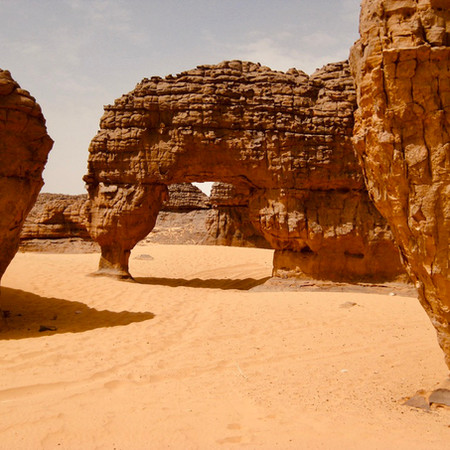
Desert Wildlife Conservation
25 Teams will Be Heading Annually To Sub Saharan Africa and Western Australia For 3 Months Conservation
Title: Desert Oasis: A Conservation Program for Desert Wildlife
Introduction: Deserts are often perceived as harsh, barren landscapes, but they are teeming with unique and diverse wildlife that have adapted to extreme conditions. The Desert Oasis conservation program aims to protect and preserve these fragile ecosystems and the species that call them home.
Goals:
Biodiversity Conservation: Safeguard the rich biodiversity of desert ecosystems, protecting native species and their habitats from threats such as habitat loss, climate change, and human disturbance.
Species Recovery: Implement recovery and reintroduction programs for endangered and threatened species, restoring populations to healthy and sustainable levels.
Ecosystem Restoration: Restore degraded desert habitats through habitat restoration, reforestation, and sustainable land management practices, enhancing ecosystem resilience and functionality.
Community Engagement: Engage local communities in conservation efforts, promoting sustainable livelihoods and empowering communities to become stewards of their natural resources.
Research and Monitoring: Conduct scientific research and monitoring to assess the status of desert wildlife populations, identify threats, and inform conservation strategies.
Education and Outreach: Raise awareness about the importance of desert ecosystems and wildlife conservation, inspiring action and fostering a culture of environmental stewardship.
Key Strategies:
Protected Areas: Establish and expand protected areas and wildlife reserves to safeguard critical habitat for desert wildlife, ensuring long-term conservation and management.
Habitat Connectivity: Restore and maintain habitat connectivity corridors to facilitate movement and dispersal of wildlife populations, mitigating the impacts of habitat fragmentation.
Invasive Species Management: Control and eradicate invasive species that threaten native desert flora and fauna, preventing further degradation of ecosystems.
Water Conservation: Implement water conservation measures to protect natural water sources and provide essential resources for desert wildlife, including artificial water sources where necessary.
Livestock Grazing Management: Manage livestock grazing to minimize impacts on desert ecosystems, promoting sustainable grazing practices and rotational grazing schemes.
Fire Management: Implement fire management strategies to prevent and mitigate the impacts of wildfires on desert habitats and wildlife, including prescribed burning and firebreak construction.
Community-Based Conservation: Collaborate with local communities to develop and implement conservation initiatives that support sustainable livelihoods and promote community well-being.
Partnerships and Collaboration: Forge partnerships with government agencies, NGOs, academia, and other stakeholders to leverage resources, expertise, and support for desert wildlife conservation efforts.
Policy Advocacy: Advocate for the adoption and enforcement of policies and regulations that promote desert wildlife conservation and sustainable land use practices at local, national, and international levels.
Capacity Building: Build the capacity of local organizations, government agencies, and community groups to effectively implement and manage desert wildlife conservation programs.
Implementation:
Stakeholder Engagement: Consult and collaborate with stakeholders to develop and implement conservation plans that address the needs and priorities of local communities, landowners, and other stakeholders.
Baseline Surveys: Conduct baseline surveys and assessments to gather data on desert wildlife populations, habitat condition, and threats, providing a foundation for conservation planning and monitoring.
Pilot Projects: Initiate pilot projects to test and refine conservation strategies, demonstrating feasibility and effectiveness before scaling up to larger areas or populations.
Monitoring and Evaluation: Establish monitoring programs to track the status and trends of desert wildlife populations and habitats, evaluating the effectiveness of conservation interventions and adjusting strategies as needed.
Adaptive Management: Implement adaptive management approaches to respond to new information and changing conditions, continuously improving conservation efforts based on feedback and lessons learned.
Outcomes:
Protected Habitat: Increased protection and conservation of critical habitat for desert wildlife, ensuring the survival and resilience of species and ecosystems.
Species Recovery: Recovery and stabilization of endangered and threatened species populations, preventing extinctions and restoring ecological balance.
Ecosystem Health: Improved health and functionality of desert ecosystems, supporting biodiversity, ecosystem services, and human well-being.
Community Engagement: Enhanced community engagement and participation in conservation efforts, fostering a sense of ownership and responsibility for desert wildlife and habitats.
Policy Impact: Influenced policy and regulatory frameworks to prioritize desert wildlife conservation and sustainable land management practices, contributing to broader conservation goals and targets.
Conclusion: The Desert Oasis conservation program represents a comprehensive and collaborative approach to protecting and preserving the unique biodiversity of desert ecosystems. By working together and engaging with local communities, governments, and stakeholders, we can ensure that these fragile habitats and the wildlife they support thrive for generations to come. Together, let us safeguard the desert oases as precious havens of life and biodiversity in the arid landscapes of our planet.
Power in Numbers
30
Programs
50
Locations
200
Volunteers
Project Gallery


